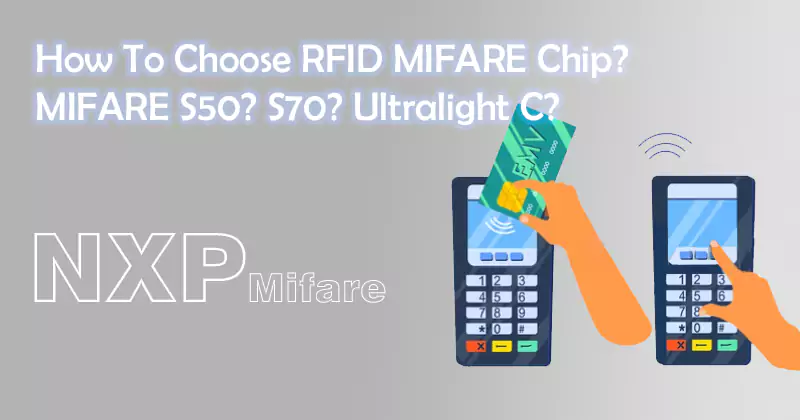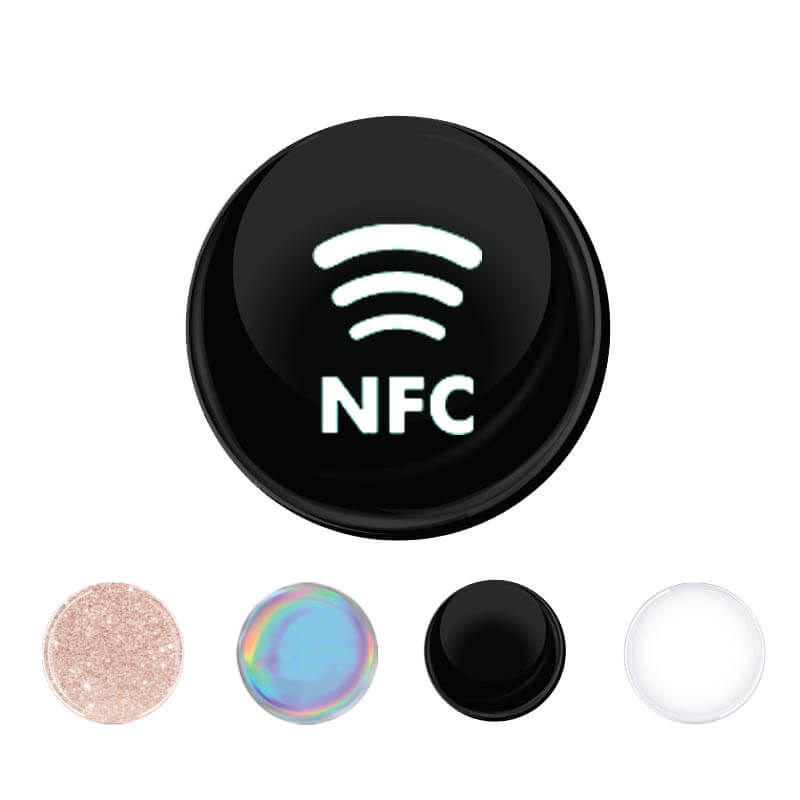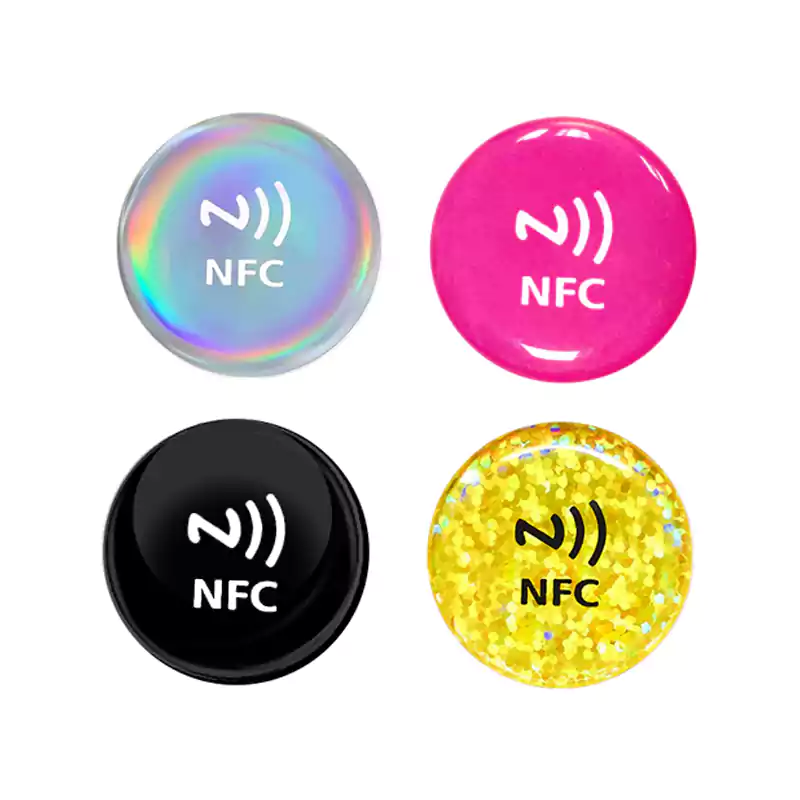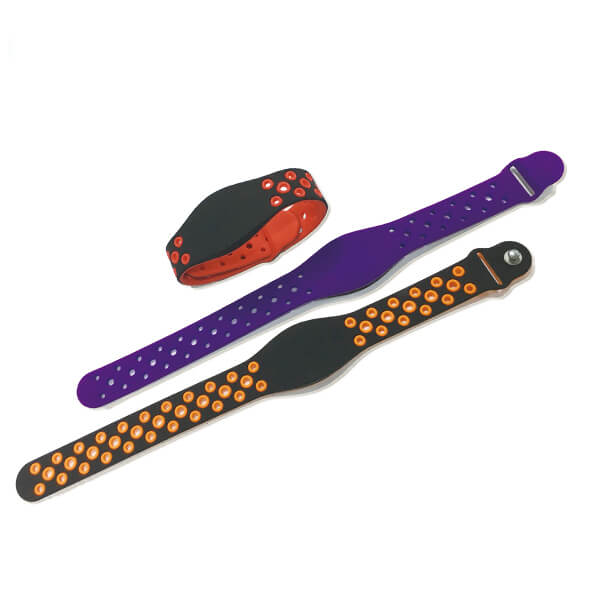RFID chips are the major constituents of electronic tags. And it would interest you to know that RFID chips are at the core of the whole RFID system. The tag chip has a primary structure that comprises a radio frequency’s front end, an analog’s front end, a memory unit, and a baseband (digital).
The RFID chip frequency bands are 2.45 GHz, 860-960 MHz, 433 MHz, 13.56 MHz, 125 kHz, etc. The conventional frequency bands are 860-960 MHz (Ultra-high frequency) and 13.56 MHz (High Frequency).
MIFARE is the short form of the Mikron Fare Collection system, and it is a prominent contactless solution from the stables of NXP. MIFARE is notable for having several uses, and this is why organizations and corporate bodies use it.
Have you ever been to an organization where some of the employees have some cards to enter private places? A good number of these places are restricted, and only those who have the cards can gain entry.
It would interest you to know that these cards work with RFID chips containing the employee’s information or data. The system also contains the RFID reader that checks the data on the card within a short distance range of 4 inches. If the system reads the information as correct and accurate, the employee would be able to enter.
If you want the best for your organization, it is appropriate to opt for an RFID MIFARE chip. And this is because you have lots to gain from using ordinary chips.
MIFARE Classic
MIFARE Classic is the first contactless smart ticket Integrate circuit. It functions in the frequency range of 13.56 MHz, alongside the ISO 14443 standards and the read/write complete capability. The MIFARE Classic pioneered the contactless movement by setting the standards for several applications in Universities, Organizations and Corporate bodies, Access management, and public transport.
The MIFARE Classic comes with either the unique identifier of 7-bytes or the non-unique identifier of 4-bytes. The MIFARE IC 1K has 1KB divided into 16 parts, while the MIFARE IC 4K has 4KB divided into 40 parts. Also, it comes with configurable memory features.
On the market currently, the MIFARE classic chips are among the most reliable and inexpensive. And because of this, more people and organizations have come to rely on its usage. The downside that came with this was, when the use of MIFARE classic chips increased, its security lapses became obvious.
Hence, NXP produced a more stable system called the MIFARE Classic EV1, which is great for security-related applications.
MIFARE Classic EV1
The MIFARE Classic EV1 is an enhancement of the first classic chip. It has the 4K(Mifare S70) and 1K(Mifare S50) EEPROM memory variety. And this is great because it ensures flexibility. It is correct to mention that the MIFARE Classic EV1 stands for the supreme metamorphosis of the MIFARE Classic family.
With the MIFARE Classic EV1, you get a robust electrostatic discharge that allows for easy use of the integrated circuit during the card production and inlay process. Also, it comes with upgraded ESD features, an NXP-enabled originality check function, amongst others.
The MIFARE Classic EV1 has had several uses in the public transportation sector, including access control and time tracking.
MIFARE DESFire
The MIFARE DESFire is a big group as it comprises the MIFARE DESFire EV1, MIFARE DESFire EV2, and the MIFARE DESFire light contactless integrate circuit. The MIFARE DESFire is best for system handlers and solution developers who build dependable, consistent, and extensible contactless solutions.
One of the best parts is, the MIFARE DESFire group is quintessential in smart car solutions, transport schemes, and small-scale payment transactions. And you will be surprised to know that the MIFARE DESFire IC product meets the standards for prompt and well-secured data and information transmission.
Moreso, the MIFARE DESFire provides adjustable memory handling, and it is compatible with conventional contactless systems. The MIFARE DESFire meets the global standards for cryptographic and air interface in addition to the four ISO/IEC 14443A levels. Interestingly, the MIFARE DESFire IC products are fully NFC compliant.
Equipped with a proficient on-chip backup management network, the MIFARE DESFire IC products also comes with three-pass authentication. And interestingly, the MIFARE DESFire smart card can contain around 28 various applications, with each application containing 32 files. Each file’s size is fixed at its inception, which makes MIFARE DESFire a suitable and flexible product group.
What’s more, the MIFARE DESFire EV2 can accommodate a limitless number of various applications that are limited by the memory size of each family member. Hence, new applications can be integrated when the card has been fixed into the market. More so, two applications or more can share a purse for improved compatibility.
Interestingly, all file types come with an automated anti-tear system that assures smooth and reliable data processing. It would startle you to know that, with MIFARE DESFire ICs, you can get up to 848 Kbit/s, which makes data processing fast, smooth, and secure.
If you seek products with improved client-friendly designs that give reliability and security, the MIFARE DESFire is a great choice.
MIFARE Plus
One of the primary functions that the MIFARE Plus product group brings to the table is Advanced Encryption System security to contactless applications. The MIFARE Plus allows for a smooth and easy upgrade of MIFARE Classic products and services with little or no effort.
Due to this feature, there is a big chance that issue cards might work well with MIFARE Classic, where there are prevalent system environments before security infrastructure upgrades. The MIFARE Plus products run its authentication with AES security after the security upgrade, alongside other features like encryption and data integrity, which is hinged on worldwide standards.
MIFARE Ultralight
Currently, the MIFARE Ultralight family comes with three family members that supply system integrators, full flexibility, and proficiency to run complete system solutions. And the interesting part is, these features are not limited to zones, times and neither are they single-used tickets or multiple-use tickets.
Integrators will have lots to gain from these tickets because they cannot be reloaded. Hence, with its OTP (One-Time-Programmable) Memory in line with the UID (ISO Unique Identifier), a secure infrastructure is provided to facilitate this feature.
The use of MIFARE Ultralight product tickets are not far-fetched; they are perfect for an inexpensive cost and top-volume applications like loyalty cards, public transport, and event tickets. It would interest you to know that the MIFARE Ultralight product tickets are the ideal contactless alternative for barcode and magnetic stripes. And this explains the trend of changing full systems to wholly contactless solutions.
Since the inception of the MIFARE Ultralight Integrated Circuit solutions, it has resulted in fewer system installations and reduced maintenance costs. It is easy to incorporate MIFARE Ultralight products into running schemes, and paper-ticket vending tools can be seamlessly upgraded.
Also, you can use the MIFARE Ultralight chip family in hotel rooms and places that need access authorization.
What’s the difference between them?
Initially, when the MIFARE Classic Chip was developed by NXP, stringent security measures were not incorporated. Hence, when other families were developed, security was enhanced when the chips were used for different transactions.
The recent chips come with upgraded security features, password protection and other state-of-the-art data protection features. If you are using applications that need sophisticated security, you must avoid the MIFARE Classic Version.
For the whole MIFARE family, the memory range is between 40-32K bytes. The MIFARE DESFire EV3 comes with a whooping memory of 32K bytes. At the same time, the Ultralight chip comes with an average memory of 100 bytes.
The communication speed of the MIFARE family is between 106kbps-848kbps. And interestingly, the MIFARE DESFire has the fastest speed.
For the Unique Identifier, the MIFARE Ultralight comes with the 7-bytes UID; the DESFire has the 7-bytes UID and Random ID. The Plus and Classic have the 7-bytes UID, 4-bytes NUID and Random ID. It is important that when you want to opt for an RFID MIFARE-chip, you consider the necessary features and peculiarities of each of them.
Final Verdict
The beauty of RFID MIFARE-chips is, they have been simplified with easy-to-use data system logistics and management. And this is a relief to several organizations and corporate bodies around the world. This technology enables the RFID system chips to read and write data. And it makes it effortless to handle ticketing and corporate access.
If you observe closely, you will see that RFID MIFARE technology has been incorporated into various sectors. Some notable ones are the transportation sector, education, logistics, and the likes. These cards are top-notch and efficient, and you will only be able to harness their full potentials when you purchase the right chip that meets your needs.
For instance, you will be making a wrong move if you purchase a MIFARE Classic card when you want to handle data that demand top-level security. In this case, it would be best to purchase the MIFARE Ultralight or DESFire because they have upgraded security features.
It is imperative to go through this guide before deciding on the best RFID MIFARE chip to opt for.
Related articles:
- A Guide to Buying RFID tags and Equipment.
- 6 Crucial Factors that Affect RFID Read Range – A Detailed Guide
- How to Choose LF EM Series RFID Chip? EM4100? EM4200? OR EM4305?
- MIFARE vs. Proximity Card: A Detailed Comparison
- LF, HF, and UHF Frequency: What’s the Difference?
- Mifare Plus Vs Mifare Classic, Which you need?
- MIFARE vs. Proximity Card: A Detailed Comparison











